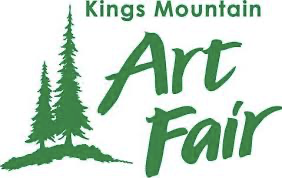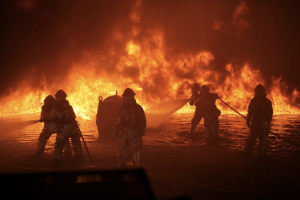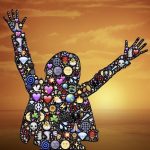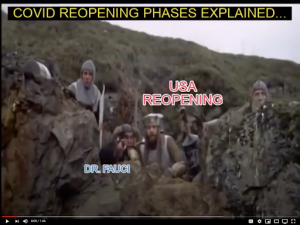 What a crazy week, TVD friends,
What a crazy week, TVD friends,
I hope that this newsletter finds you safe, and well. The Team at The Village Doctor is holding all of you affected by this week’s California wildfires close in our respective hearts. As the flames subside, and the majority of us are lucky to be untouched, it will be easy to move on and forget the sacrifices made by those who have lost much, as well as those who marched into danger, carrying shovels, axes, hoses, and horse trailers. To that end, was there ever a better moment to support our volunteer firefighters up the hill on Kings Mountain? Not to mention the Elementary School. Please see below and mark your calendars! You can learn more here, or register for this year’s virtual event here.


NOTE: CV🦠News is a labor of love. If you enjoy reading this, please share widely! Was this forwarded to you by a friend? Please subscribe here.

YIKES! IS WILDFIRE SMOKE EXPOSURE POSSIBLY A COVID RISK?
The smoke from wildfires can cause irritation and inflammation in your lungs and affect your immune system, which together can make you more prone to COVID and other lung infections, so it is best to be extra careful to avoid inhalation of smoke. Children, pregnant women and those with chronic lung diseases such as asthma and COPD or heart disease should be especially cautious about breathing wildfire smoke. Smoke inhalation can cause coughing, difficulty breathing, wheezing, asthma attacks, stinging eyes, runny nose, scratchy throat and headaches. Some of these symptoms are similar to those of COVID so it’s best to avoid smoke to avoid confusion, but also the risk of more severe symptoms from COVID is likely if your lungs are irritated or inflamed from smoke inhalation.
Some tips to reduce smoke exposure:
- Avoid being outside whenever possible and do not do exercise outdoors (or at least choose lower intensity activities) until the smoke has cleared and the air quality improved (you can check your local air quality at baaqmd.gov or airnow.com).
- Keep the windows to your home or office closed and use air conditioning if necessary to keep you cool (A/C units generally do not pull outside air into the home).
- If you have one, use a portable air cleaner or filter to remove any smoke from inside your home or office.
- Avoid using candles, gas stoves or anything that can add more particulate matter into the air and do not vacuum as that may stir up particles already in your home.
- If you need to drive, roll up the windows and use the “recirculate air” feature to avoid pulling outside air into the car
- Be prepared to evacuate should the air quality become dangerous for you or loved ones (or of course if public authorities recommend it for your safety).
You may also wonder if your face covering or mask can protect you from the smoke and the answer is unfortunately “no.” While they are certainly better than nothing, most non-medical masks cannot catch small enough particles to protect you from wildfire smoke, so again, it is best to avoid being outside when possible. If you already have an N-95 mask that is well-fitted, that will prevent the particulate matter from smoke from entering your nose and mouth, but keep in mind they may still be in short supply given the pandemic.

WHAT IS THE BEST MASK TO WEAR? CAN SOME ACTUALLY MAKE THINGS WORSE?
The science is clear: face masks can prevent the spread of coronavirus, protecting both the wearer and others around them. Modeling by the University of Washington predicted that at least 45,000 deaths could be prevented by November if 95% of the population wore face masks in public.
Some masks, however, are better than others. And how well the mask fits the wearer is a crucial and often overlooked concern. A mask that droops or hangs below the nose, or all the way down to the chin is about as effective as a toddler wearing a diaper that hangs down to the knees. WHO recommends that fabric masks have three layers: an inner layer that absorbs, a middle layer that filters, and an outer layer made from a synthetic, nonabsorbent material like polyester. It should fit the face well and attach snugly using ear loops or ties.
In general any mask is better than nothing, with the potential exception of some neck gaiters, which may be worse than wearing no mask at all. A recent Duke study evaluated 14 different types of masks by estimating the number of droplets that were able to pass through the mask. The results below, in an easier to read chart by USA Today, show the best masks at the top and worst at the bottom.
Of the non-medical masks, the winners seem to be the Cotton-Polypropylene-Cotton mask and the double-layer Polypropylene mask. Polypropylene is a soft and easy to clean synthetic fabric, one of the most popular materials for masks, and has inherent antiviral and antibacterial qualities.

CAN DIET, OR MORE SPECIFICALLY OBESITY, INCREASE MY COVID RISK?
Many hospitals, doctors and epidemiologists are feverishly searching for patterns in those patients who have become sick from the SARS-CoV-2 virus. Some individuals have minimal symptoms and recover quickly and others have severe immune responses. It’s not completely clear why there is such a wide spectrum of symptoms.
We know that older age and chronic health conditions like high blood pressure and heart disease increase the risk of severe COVID-19. The Centers for Disease Control and Prevention now also lists extreme obesity as a high risk. Two recent studies, Body Mass Index and Risk for Intubation or Death in SARS-CoV-2 Infection: A Retrospective Cohort Study and Obesity and Mortality Among Patients Diagnosed With COVID-19: Results From an Integrated Health Care Organization | Annals of Internal Medicine, show that obesity is an independent risk factor for developing an infection from the SARS-CoV-2 virus. Obese individuals often have other health conditions such has diabetes, high blood pressure or heart disease but interestingly these studies show that obesity by itself is a risk factor.
In addition, the obesity risk is observed more significantly in men under the age of 60.
Among women with the illness, body mass index does not appear to be independently associated with an increased risk of dying at any age. The authors of the study suggest that women carry weight differently than men who tend to have more visceral and abdominal fat.
This recent NY times article also addresses the question around obesity. Obesity and the coronavirus can be a dangerous combination.
In addition, obesity can restrict breathing, making it more difficult to clear pneumonia and other respiratory infections. Fat is known to be a source of pro-inflammatory chemicals, promoting a state of chronic inflammation in the body even before Covid-19 sets in. Unfortunately this translates to obesity causing metabolic changes and abnormalities, even in the absence of diabetes.
For those individuals who have BMI greater than 40 or extreme obesity, reducing potential exposures and reducing their overall risk will be crucial. Even small amounts of weight reduction can help, so as always a healthy diet and any amount of body movement is a good prescription.

WHEN CAN I BE AROUND A FRIEND WHO HAD COVID-19?
You can spend time around a friend who had COVID-19 when that friend’s home isolation period ends. The overview:
If your friend had symptoms that were not severe (did not require hospitalization) and is not immunocompromised, you can probably safely be around them after
- 10 days since symptoms first appeared and
- 24 hours with no fever without the use of fever-reducing medications and
- Other symptoms of COVID-19 are improving **Loss of taste and smell may persist for weeks or months after recovery and need not delay the end of isolation
If your friend tested positive for COVID-19 but had no symptoms and is not immunocompromised, you can be around them after 10 days have passed since they had the positive viral test.
If your friend was hospitalized for severe COVID-19 or if they are immunocompromised, infectious virus may take longer to clear. In this case, they may need to self-isolate at home up to 20 days after symptoms first appeared, or they may require testing to determine when they can be around others. Talk to your healthcare provider for more information. Your doctor may work with an infectious disease expert or your local health department to determine whether testing will be necessary before you can be around them.
Note that most people who have had COVID-19 do not require testing to decide when they can be around others. Because the duration of shedding of viral particles can last for weeks, long after those particles remain infectious, the current recommendations for home isolation focus on the length of time since diagnosis, and whether the person had severe infection or is immunocompromised for the best sense of how long they may shed infectious particles. If you want to be safest, you can add a few days to the end of the above recommendations before spending time with someone who’s recently had COVID-19.

If you have made it this far, time for a reward, something to lighten your day, and acknowledge the human spirit. Find some escape, or perhaps even inspiration, in this collection of works and perspectives gathered from around the world. Please contact me directly if you have come across something that has lifted your heart today. Dr. Eric Weiss.
OK, it has been a pretty terrible week, balanced, thankfully, by the “Hope and Grace” of the Democratic National Convention. If, despite all of that, you need a little (Monty Python-esque) humor, enjoy this! COVID Reopening Phases Explained by Monty Python. Like Tim and the Killer Rabbit we were warned about the dangers in regards to reopening too early in regards to COVID. But did we listen? No, it’s just a harmless little cold isn’t it? 🐇😂
COVID Reopening Phases Explained by Monty Python. Like Tim and the Killer Rabbit we were warned about the dangers in regards to reopening too early in regards to COVID. But did we listen? No, it’s just a harmless little cold isn’t it? 🐇😂
The Fun and Joy of Interacting With Architecture: Creative duo Daniel Rueda and Anna Devís find wonder in seemingly ordinary places. As two former architects, they incorporate elements of buildings into their whimsical compositions in which a model (often Devís) is perfectly coordinated with different facades or blends into the scenery. Enjoy!
Again, CV🦠News is a labor of love. If you enjoy reading this, please share widely! Was this forwarded to you by a friend? Please subscribe here.
*****
Yours, in health and resilience,
Eric and the TVD MD team…




